Before writing this guide, I also read many guides or travel notes about Jiuhua Mountain on the Internet. Personally, I think that many guides are either written by tourists who don’t have a deep understanding of Jiuhua Mountain, or they have commercial or advertising purposes. But for tourists, there are still relatively few truly practical and reliable guides. Therefore, based on some of the issues that tourists are most concerned about during in-depth travels, I have integrated this guide, hoping to help tourists who want to come to or learn about Jiuhua Mountain.

Mount Jiuhua
I. Introduction to Jiuhua Mountain
Jiuhua Mountain Scenic Area is one of the first batch of national key scenic spots, a national 5A-level tourist area, a demonstration site of a national civilized scenic tourist area, and one of the first batch of national natural and cultural dual heritage sites. Together with Mount Wutai in Shanxi, Mount Putuo in Zhejiang, and Mount Emei in Sichuan, it is known as one of the four famous Buddhist mountains in China and is the 道场 of Bodhisattva Ksitigarbha. Jiuhua Mountain Scenic Area is located in Qingyang County, Chizhou City, Anhui Province. It is 20 kilometers away from Qingyang County seat and 50 kilometers away from Chizhou urban area. The central location is Jiuhua Street.
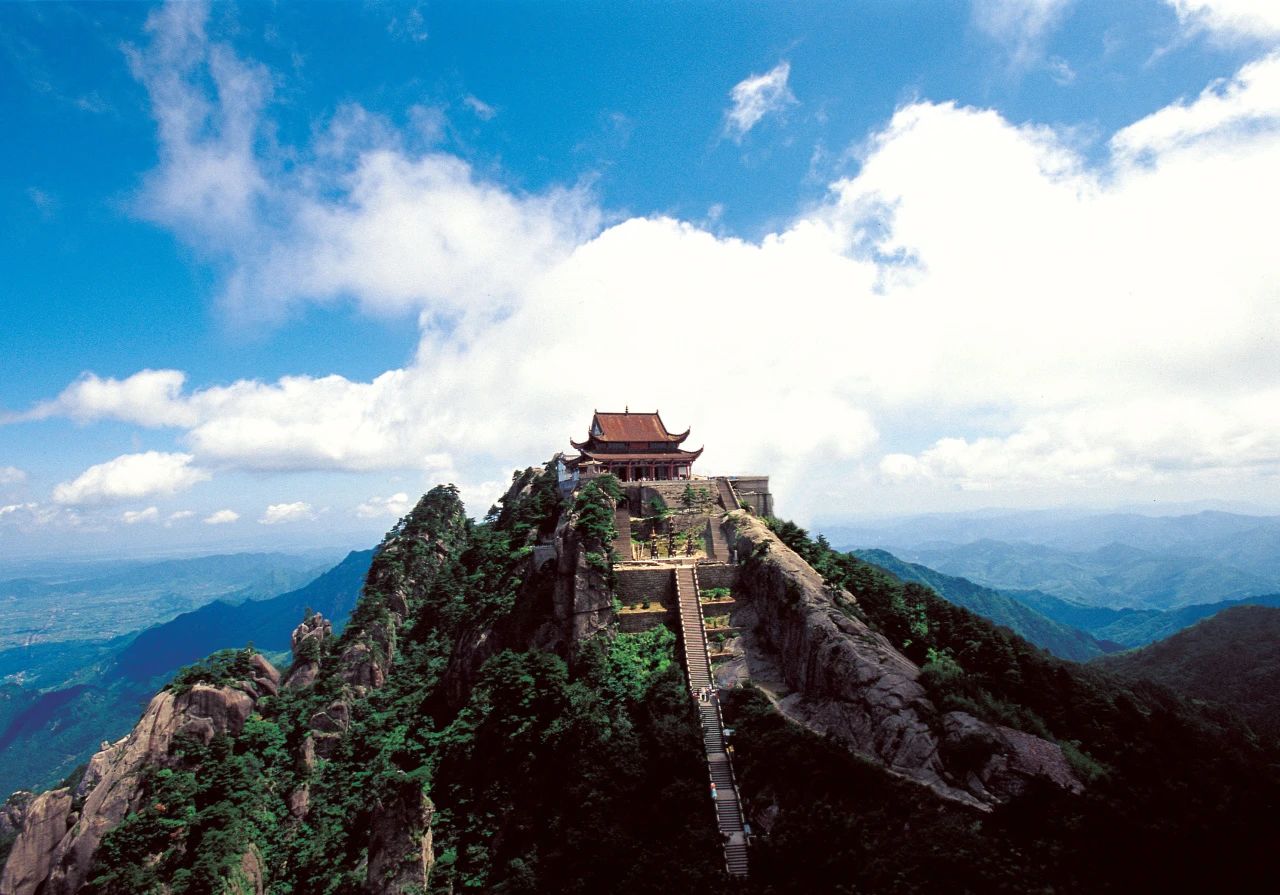
II. How to get to Jiuhua Mountain?
- By air (Here are the three most common arrival airports introduced)
(1) Chizhou Jiuhua Mountain Airport: It is 32 kilometers away from the tourist service center (transfer center) of the scenic area. There is a direct shuttle bus from the airport to the scenic area. The journey takes 40 minutes and the fare is 20 yuan. At present, flights have been opened to Beijing, Shanghai, Tianjin, Guangzhou, Shenzhen, Xiamen, Chengdu, Nanning and other places.
(2) Hefei Xinqiao Airport: It is 220 kilometers away from Jiuhua Mountain. You need to take a bus from the airport to Hefei South Railway Station or Hefei South Bus Station. If you take a high-speed rail from Hefei South to Chizhou, the journey takes one and a half hours. After arriving at the high-speed rail station, transfer to the direct shuttle bus to the scenic area, which takes 50 minutes. If you take a long-distance bus (Hefei – at the foot of Jiuhua Mountain), the journey takes three hours.
(3) Nanjing Lukou Airport: It is 220 kilometers away from Jiuhua Mountain. You need to take a bus from the airport to Nanjing South Railway Station. Then take a high-speed rail to Chizhou Station and transfer to the direct shuttle bus to arrive.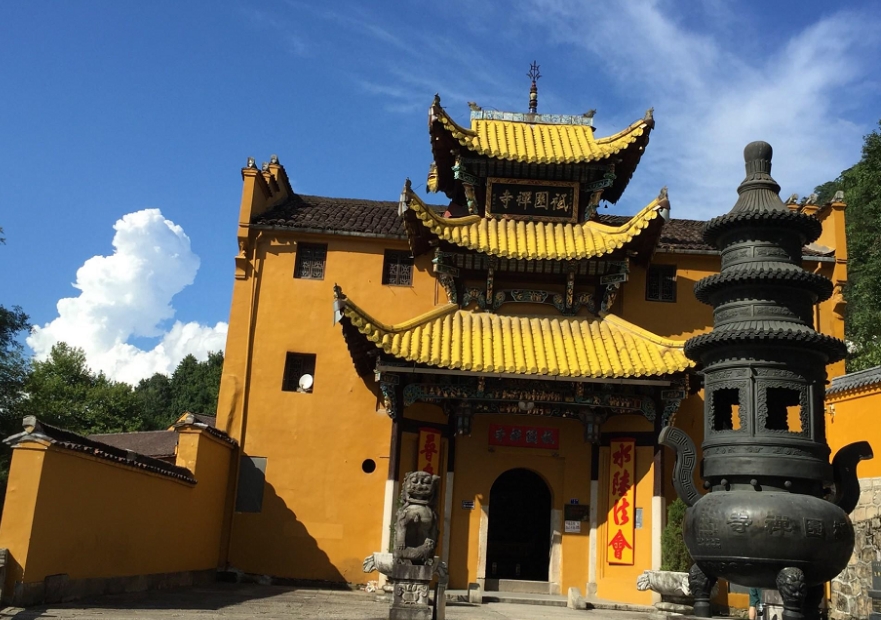
- By high-speed rail (Here are the two most common arrival stations introduced)
(1) Chizhou Station: It is 37 kilometers away from the transfer center. From Chizhou High-speed Rail Station to the scenic area, you can take a direct shuttle bus. (PS: You can buy a 50-yuan round-trip combo ticket for Jiuhua Mountain scenic area buses at the exit of the high-speed rail station. In fact, it is equivalent to the round-trip cost from Chizhou High-speed Rail Station to the transfer center at the foot of the mountain is free. If you take a taxi, it usually costs about 100-120 yuan. A price lower or higher than this is abnormal.)
(2) Tongling North Station: It is 82 kilometers away from the transfer center. The journey from Tongling North Station to Jiuhua Mountain is 82 kilometers and the fare is 35 yuan. After arriving at the transfer center from Tongling North, you still need to buy a 50-yuan bus combo ticket. If you take a taxi, it costs at least 200 yuan. - By long-distance bus
At present, there are departure stations for long-distance bus operation routes such as Shanghai, Ningbo, Hangzhou, Nanjing, Wuhan, Anqing, Xuancheng, Hefei, Tunxi, Huangshan, Qimen, Lu’an, Nanchang, Tongling, Fanchang, Wuhu, Chaohu, Chizhou, Dongzhi, Zongyang, Langxi, etc. After arriving at the transfer center, you need to buy a 50-yuan bus combo ticket. - By self-driving (Basically, there is navigation now. Just select Jiuhua Mountain Tourist Service Center as the destination.)
Regardless of the transportation method, you first arrive at the Jiuhua Mountain Tourist Service Center (at the foot of the mountain). After purchasing tickets and transportation tickets at the tourist service center, you can go up the mountain. For vehicles with seven seats or less, you can drive up the mountain on non-holiday days. However, on weekends and holidays, there is usually traffic control during the day. At this time, you must take the scenic area shuttle bus (the round-trip combo ticket is 50 yuan). Vehicles with more than seven seats are not allowed to drive up the mountain and need to take a bus for a round trip. There are many parking lots in the scenic area, including in front of various hotels and other units. They are uniformly managed by the Jiuhua Mountain Public Security Bureau and only charge a parking fee once. The charging standard is 15 yuan for one day and 25 yuan for one night. If you go to Tiantai in the back mountain, there will be an additional 10 yuan parking fee.
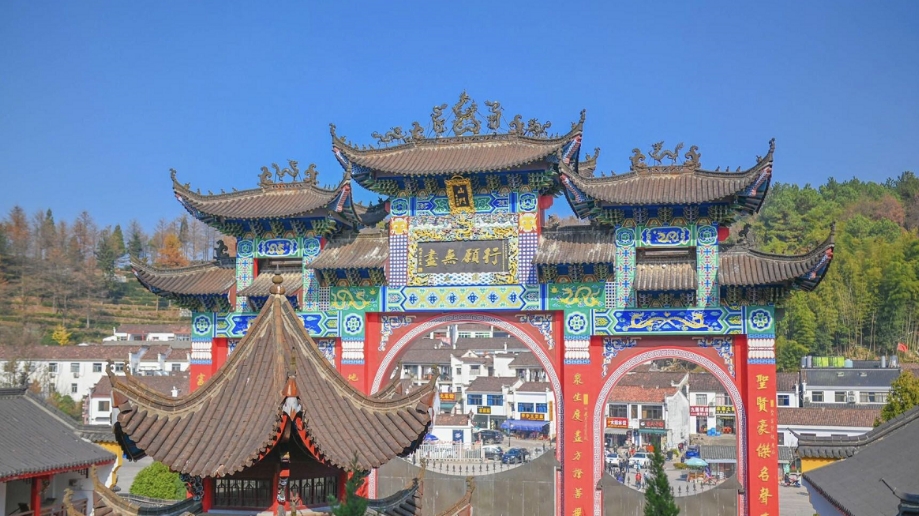
III. How to arrange the tour route of Jiuhua Mountain? How much time is needed?
The core scenic area of Jiuhua Mountain is on the mountain, divided into two major scenic areas: the front mountain (Jiuhua Street) and the back mountain (Tiantai). At the foot of the mountain, there are two newly opened scenic areas: Huatai Scenic Area and the Sacred Statue Scenic Area of Bodhisattva Ksitigarbha.
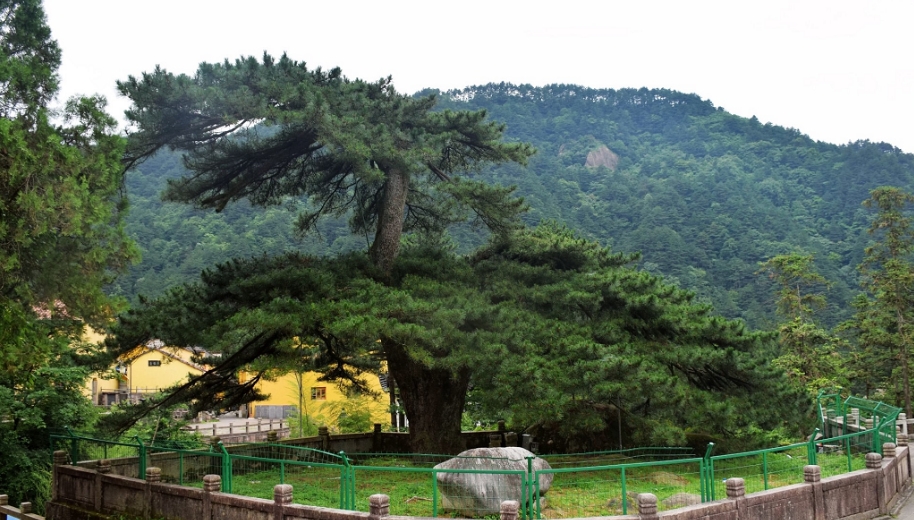
- The front mountain is famous for Buddhist culture and temple landscapes and is the most core scenic area of Jiuhua Mountain. There are three routes to visit this scenic area:
(1) Jiuhua Street line: including Huacheng Temple, Zhantanlin (Dabei Tower), Zhiyuan Temple, Mingong Hall (God of Wealth Hall), Tianchi Temple, Tonghui Nunnery, etc. Generally, it takes two hours.
(2) Baishou Palace line: including Baishou Palace, Five Hundred Arhat Hall, Natural Sleeping Buddha, Flying Avalokitesvara Peak, etc. It takes one hour to take the cable car up and down. It takes two and a half hours to walk.
(3) Yuanshen Hall line: including Di Zang Chan Temple, Yuanshen Treasure Hall, Xiaotiantai, Shangchantang, Jingjie Jingshe, etc. Generally, it takes two hours. That is to say, if all three lines on the front mountain are walked, it will take nearly a whole day. - The back mountain is famous for high mountain hanging temples, nunneries, and strange peaks and rocks. It is the secondary core scenic area of Jiuhua Mountain. There are two routes to visit this scenic area: at the top and at the foot of the mountain:
(1) Tiantai on the top line: including Baijing Terrace, Tiantai Temple, One-Line-Sky, etc. It takes three hours to take the cable car up and down. If you walk up and down, you can visit more scenic spots such as Huiju Temple, Suspension Bridge Temple, and Avalokitesvara Peak. However, you need to climb nearly ten thousand steps. Without the elderly and children, it takes five hours.
(2) Minyuan line at the foot of the mountain: including Phoenix Pine, Minyuan Nunnery Group and other scenic spots. It takes about an hour to walk. That is to say, it takes at least half a day to walk down the two lines in the back mountain. - Huatai Scenic Area must take the cable car up the mountain. After arriving, you can arrange the walking distance for sightseeing according to your physical strength. Generally, it takes two to four hours.
- The Sacred Statue Scenic Area of Bodhisattva Ksitigarbha requires a separate ticket purchase (180 yuan). From the gate to the 99-meter giant Buddha, there are more than ten small scenic spots, which takes about three hours.
In summary, it usually takes two days to visit Jiuhua Mountain and stay overnight on the mountain. If you look more carefully, you can stay for two nights. If it is a one-day tour, choose to visit representative scenic spots and temples. Here, combined with the scenic spots and temples that tourists are most enthusiastic about, I recommend two classic one-day tour routes to everyone.
Route 1 (mainly for pilgrimage, incense-burning, and worship): After entering the scenic area, go straight ahead 100 meters. First, worship Zhiyuan Temple (this is currently the temple with the most complete layout and establishment in Jiuhua Mountain). Then go straight ahead 100 meters and take the cable car of Baishou Palace to visit Wannian Chan Temple Baishou Palace (the only royal temple in Jiuhua Mountain, enshrining the flawless real body Bodhisattva from the Ming Dynasty that can be seen with the naked eye), Five Hundred Arhat Hall, Natural Sleeping Buddha (the most magical natural landscape in Jiuhua Mountain. Looking horizontally, it is a mountain. Looking vertically, it is a Buddha). Then take the cable car down to Jiuhua Street. Then worship Huacheng Temple (the founding ancestral temple of Jiuhua Mountain), Shangchantang (there is a Guanyin with dripping water in the temple), Yuanshen Treasure Hall (where the physical body of Bodhisattva Ksitigarbha is located, the main holy place of Jiuhua Mountain) and other temples along Jiuhua Old Street. When returning, worship Zhantanlin (there are three great halls: Huayan Treasure Hall, Dabei Hall, and Great Vow Hall). Finally, go to Mingong Hall (God of Wealth Hall). If there is extra time at this time, you can drive or take a bus to Tiantai in the back mountain (the highest temple on Jiuhua Mountain at the highest altitude). Then end the journey and go down the mountain.
Route 2 (first burn incense and worship, then view the natural scenery): After entering the scenic area, go straight ahead 100 meters. First, worship Zhiyuan Temple (this is currently the temple with the most complete layout and establishment in Jiuhua Mountain). Then go straight ahead 100 meters and take the cable car of Baishou Palace to visit Wannian Chan Temple Baishou Palace (the only royal temple in Jiuhua Mountain, enshrining the flawless real body Bodhisattva from the Ming Dynasty that can be seen with the naked eye), Five Hundred Arhat Hall, Natural Sleeping Buddha (the most magical natural landscape in Jiuhua Mountain. Looking horizontally, it is a mountain. Looking vertically, it is a Buddha). Then take the cable car down to Jiuhua Street. Then worship Huacheng Temple (the founding ancestral temple of Jiuhua Mountain), Yuanshen Treasure Hall (where the physical body of Bodhisattva Ksitigarbha is located, the main holy place of Jiuhua Mountain) and other temples along Jiuhua Old Street. After burning incense in Yuanshen Treasure Hall, you can freely choose Tiantai or Huatai Scenic Area. If you go to Tiantai, you can transfer to a bus at the intersection of Yuanshen Treasure Hall and reach the back mountain. Take the cable car to the top of Shiwang Peak, the highest peak of Jiuhua Mountain, and Tiantai Temple, the highest temple. If you go to Huatai (the most beautiful place with natural scenery in Jiuhua Mountain), you need to return to the entrance ticket checkpoint to register for re-entry of the ticket (you must register. Otherwise, you need to buy a ticket again to go to Huatai). Then transfer to a bus to Huatai. To reach the top of Huatai, there is only one option of taking the cable car. There is a newly built high-altitude cliff plank road on it. When the alpine rhododendrons are in full bloom in April and May every year, the scenery is very beautiful.
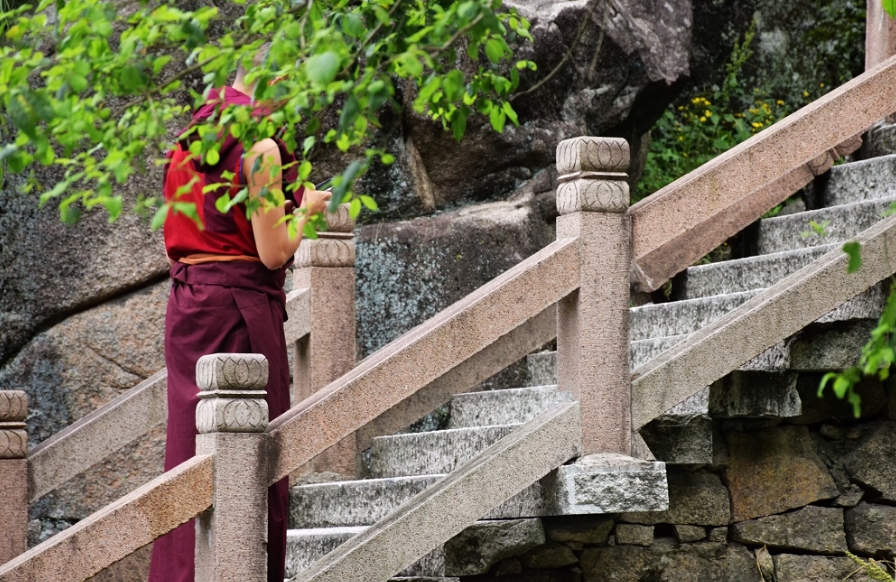
IV. Eating in Jiuhua
The local dishes in Jiuhua Mountain are heavy in oil, strong in color, and spicy. If you prefer a light taste, please inform in advance. Generally, restaurants have clearly marked prices. The prices are not too expensive, similar to the normal consumption level in big cities. If you want a discounted price, you need to communicate with the boss in advance. Some characteristic local dishes include old chicken soup with stone fungus, small river fish, sealwort, scrambled eggs with stone fungus, braised pork with dried bamboo shoots, and so on. The prices of game are generally relatively high. The taste may not be as good as expected. Moreover, when you come to a famous Buddhist mountain, it is recommended not to eat wild animals. This is also equivalent to releasing them. When you come to the Buddhist mountain, if you have the opportunity, it is recommended to experience vegetarian food. Generally, larger temples are open to tourists. But generally, you need to make a reservation with the master in the guest hall before 10 am. The cost is generally 10 to 20 yuan. For those who want to eat exquisite vegetarian food, the four-star and above hotels on the mountain generally have it. The per capita consumption is roughly 80 yuan. The color, fragrance, and taste are very similar to real meat dishes, but they are all made of bean products.
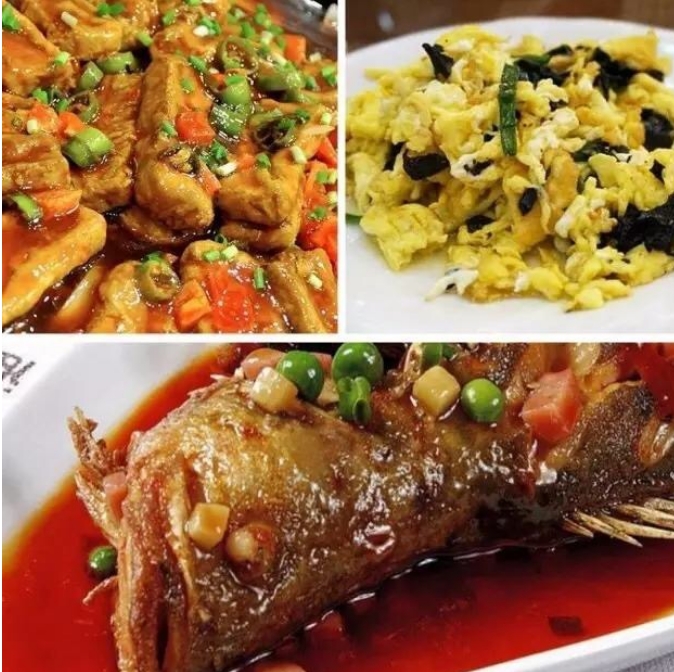
V. Staying in Jiuhua
On Jiuhua Mountain, it is a place where monks and laypeople live together and complement each other. Therefore, on the street, temples and folk houses can be seen everywhere. There are five-star standard hotels such as Julong Hotel and Dongya Hotel on the mountain. Four-star standard hotels include Shangketang and Jiuhua Yuan. Three-star hotels include Baishou Villa, Golden Phoenix Hotel, Bell Tower Hotel, Longquan Hotel, and Jiuhua Mountain Villa (under reconstruction). In addition, there are hundreds of farmhouses. Some homestays are also relatively high-end. The prices are generally very transparent. As for the price, a high-star hotel generally costs nearly 1,000 yuan per room. A mid-range one is roughly 300-400 yuan per room. A room with general conditions is more than 100 yuan per room. In addition, many temples also provide accommodation, but most of them are large bunk beds, 20-30 yuan per person. In addition, at the foot of the mountain (Ke Village Tourist Service Center), there are also hotels and farmhouses of various grades. The accommodation conditions are similar to those on the mountain, and the price is slightly lower. If you want to drive your car up the mountain and experience the night view of Jiuhua Mountain at night, it is recommended to stay on the mountain. After all, it will be much more convenient. If you don’t have special needs, you can consider staying at the foot of the mountain. The total number of beds on the mountain exceeds 10,000, and the number of beds at the foot of the mountain also exceeds 10,000, which can basically meet the needs of tourists staying at ordinary times. However, on weekends and holidays during the peak season, it will be difficult to find a bed even on the mountain or at the foot of the mountain. So if you want to come on a weekend during the peak season, you must book in advance online.
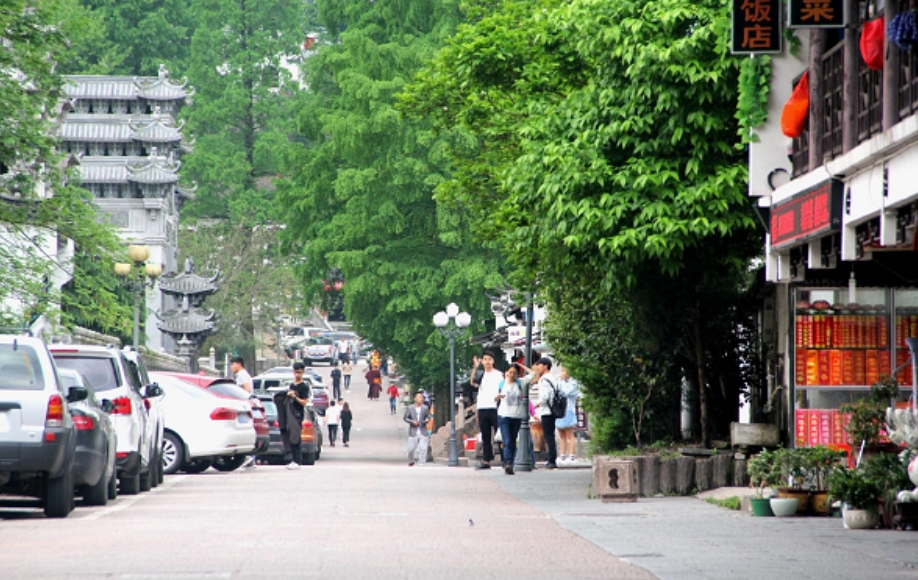
VI. Relevant expenses of Jiuhua Mountain Scenic Area
- Tickets (must be purchased)
Jiuhua Mountain entrance ticket 160
Jiuhua Mountain scenic area transportation 50 (if you can drive up the mountain, you don’t need to buy it)
99-meter giant Buddha scenic area free 0
99-meter giant Buddha scenic area battery car 30 (normally, it’s good to walk)
(1) Discounted objects
·Teenagers (children, students, minors): Minors aged 6 years old (excluding 6 years old) to 18 years old (including 18 years old), full-time undergraduate and below students. Present your valid “student ID card” that has been registered at school.
·Elderly people: People aged 60 to 64 years old (calculated by year). Present your valid ID card and senior citizen privilege card.
·Converted disciples: Present your “Conversion Certificate” issued by the Religious Affairs Bureau of Jiuhua Mountain Scenic Area Management Committee, jointly issued by Jiuhua Mountain Buddhist Association and various temples in the scenic area, and your ID card. (The “Conversion Certificate” should simultaneously have a recent photo of the converted disciple, the signature or real seal of the temple abbot, and the temple seal.)
·Low-income groups: Present your “Minimum Living Standard Guarantee” and “Five Guarantees” certificates.
·Teachers: Present your “Teacher Qualification Certificate” issued by the national education authority and your ID card.
·Provincial labor models and provincial moral models: Present your relevant honorary certificates and ID cards.
(2) Free ticket objects
·Minors: Children under 6 years old (including 6 years old) or children with a height of 1.2 meters (including 1.2 meters) or less.
·Elderly people aged 65 years old or above (calculated by year). Present your valid “resident ID card”.
·Disabled people: Present your valid disability certificate and ID card.
·Active servicemen, disabled servicemen, and military retirees: Present your valid certificates (officer card, soldier card, civilian cadre card, etc.).
·Buddhist monks and nuns in Jiuhua Mountain (only in Jiuhua Mountain Scenic Area).
·Primary and secondary school students who visit patriotic education bases in groups. National labor models and winners of the title of National Moral Model present their relevant honorary certificates.
·Journalists holding the “Press Card” issued by the “State Administration of Press, Publication, Radio, Film and Television”.
·Members of the “Photographers Association of China and Anhui Photographers Association” present their “Membership Card of Photographers Association” and themselves (based on the list provided by the Photographers Association of China and Anhui Photographers Association, handle with membership card and ID card).
·People holding the “Chizhou Green Card”.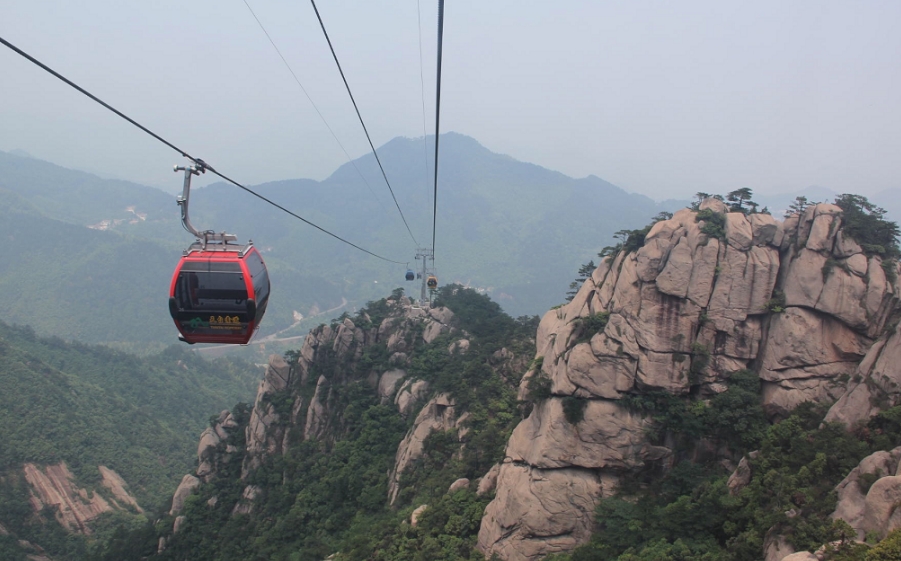
- Cable cars and ropeways (optional)
Round-trip cableway for Huatai: 160 yuan.
Round-trip cable car for Baishou Palace: 100 yuan.
Round-trip cableway for Tiantai: 160 yuan.
(1) Discounted objects: Children between 1.2 and 1.4 meters tall, disabled people, people over 70 years old, full-time students, and active soldiers can enjoy discounted tickets with valid identification.
(2) Free ticket objects: Children under 1.2 meters tall.
VII. Precautions
- If you arrive at Jiuhua Mountain by bus, high-speed rail, airplane or other means of transportation and need to transfer, try to take a bus or taxi with operating qualifications. It is best not to take an unlicensed taxi. Unlicensed taxis not only have high safety risks but also you may encounter bad drivers who cheat and overcharge passengers. If you come to Jiuhua Mountain by self-driving, starting from when you get off the expressway exit, there may be people who stop your car and strike up conversations along the way. Whether they are monks or people claiming to be staff, please ignore them. After they get in the car, they will persuade you to consume or do good deeds. The only purpose is the money in your pocket.
- In order to create an atmosphere of civilized incense-burning and strengthen environmental protection at the same time, all temples in Jiuhua Mountain will provide tourists with three free incense sticks. If you want to buy incense outside the temple, you can choose standard incense. Candles and excessive incense are prohibited from being brought into the temple.
- From when you arrive at the foot of Jiuhua Mountain, then to the entrance for ticket checking when going up the mountain, and even when you enter each temple, there may be people who take the initiative to “kindly” show you the way and lead the way. So you should be rational and not blindly listen to these people. The way they let you go and the place they take you to must have their purposes. If you really need to consult, you can go to a regular consulting point to ask or consult staff in uniforms. If you need a tour guide, I also suggest that you go to the tour guide service center to hire an interpreter with a regular tour guide certificate.
- Don’t look at the scenery while walking, and don’t walk while looking at the scenery. The tourist routes in Jiuhua Mountain are all flagstone paths. Be sure to pay attention to safety and be careful of slipping. It is better to take the cable car or ropeway up and down the mountain. Many tourists underestimate the difficulty of climbing mountains and waste time and energy on climbing.
- There are many wild monkeys on the mountain. Some tourists like to take pictures with them or feed them out of curiosity. But often tourists are scratched and bitten, spoiling a good mood. If you are really scratched or bitten by a monkey, you can take your ticket to the ticket management office to get a rabies vaccine injection.
- Don’t smoke while walking on the tourist routes in the scenic area, and don’t throw cigarette butts casually. If a forest fire occurs, the sin will be great. Also, don’t litter. Sanitation workers are really hardworking. Sometimes it is very dangerous for them to pick up garbage under the cliff.
- When entering or leaving a temple, don’t step on the threshold, and don’t stand or sit on it, and don’t block the door. Monks respect Buddha statues very much. Generally, tourists are not allowed to take pictures or videos in the temple hall because they are worried that you will put the photos casually instead of enshrining them. Don’t make loud noises in the temple, and don’t dress revealingly or use vulgar language. Don’t ask about the personal affairs of monks. The ritual instruments in the temple (bells, drums, wooden fish, chimes, clappers, cloud boards, etc.) cannot be touched, and they must not be struck casually.
This is the guide I have integrated and summarized. Due to limited space, it cannot cover everything, but it basically includes the issues that daily tourists are concerned about. I hope it can help you. You are also welcome to come to Jiuhua Mountain to experience the charm of the Lotus Buddha Kingdom and feel the profoundness of Chinese Ksitigarbha culture. Finally, I wish you a perfect journey in China.